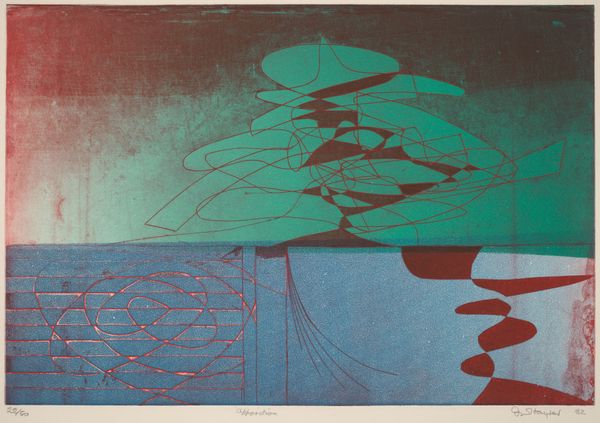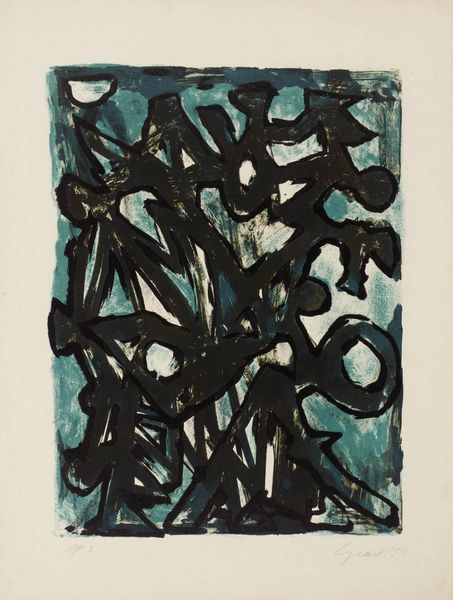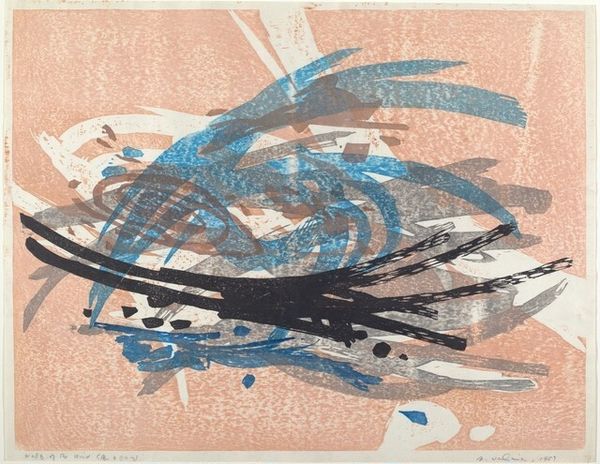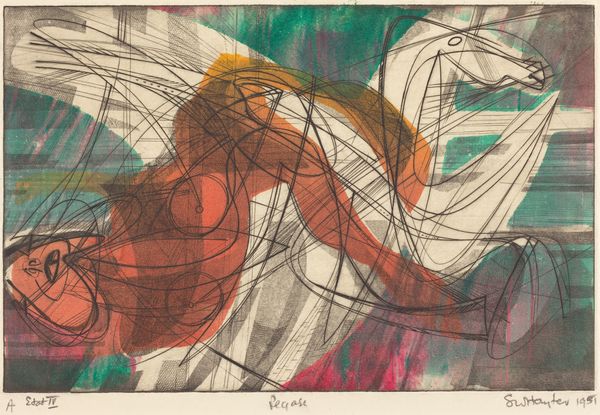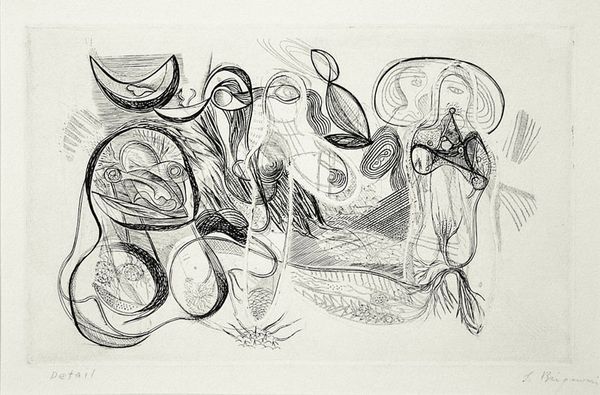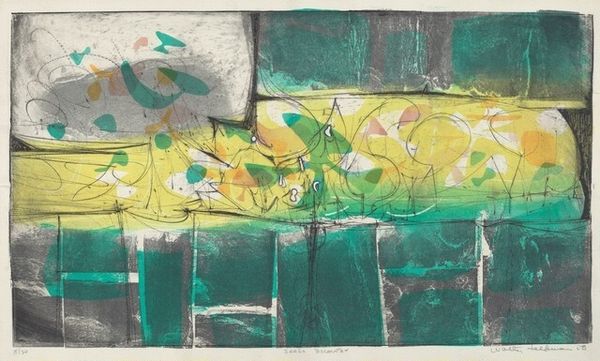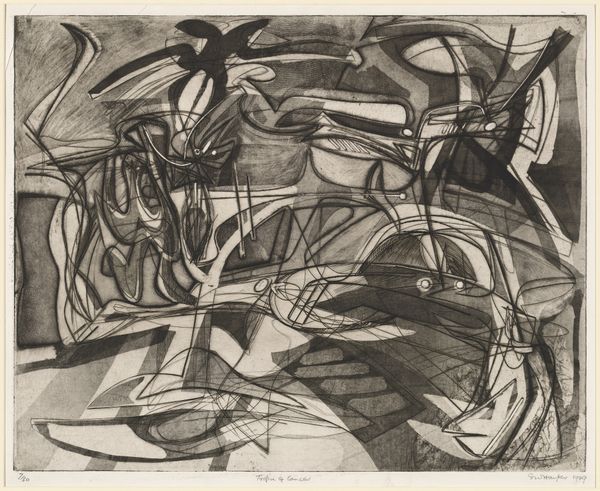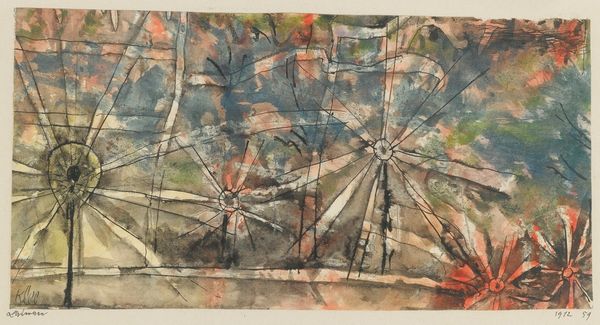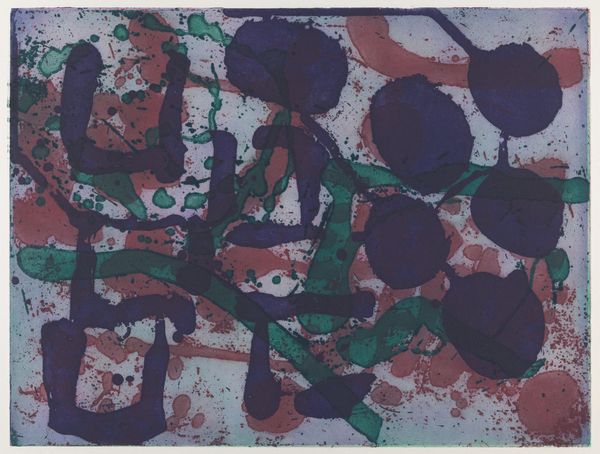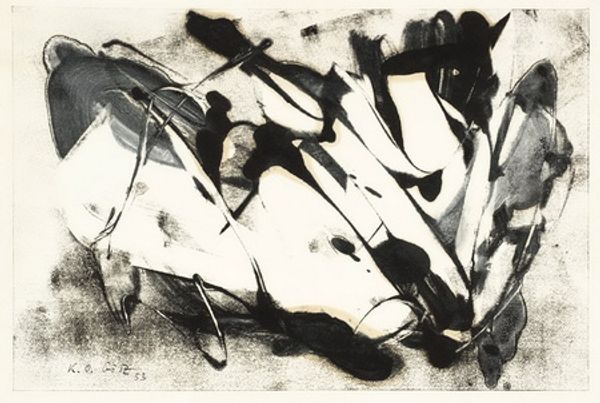
aquatint, print, etching
#
aquatint
#
abstract-expressionism
# print
#
etching
#
form
#
linocut print
#
abstraction
#
line
#
modernism
Dimensions: plate: 49.53 × 63.82 cm (19 1/2 × 25 1/8 in.) sheet: 68.42 × 83.34 cm (26 15/16 × 32 13/16 in.)
Copyright: National Gallery of Art: CC0 1.0
Curator: Immediately I am struck by the visual chaos; it feels dense and unnerving. Editor: Indeed, "Witches' Sabbath," an aquatint and etching from 1958 by Stanley William Hayter, masterfully utilizes the printmaking process to explore this unsettling imagery. Notice how the overlapping lines and textures create a sense of frenetic energy. Curator: The white lines stand out, almost as if they’re scratching at the surface, pushing to break free from the dense, swirling patterns in muted greens and blues underneath. Editor: Hayter’s experimental techniques here allowed for that complexity. He was really pushing the boundaries of printmaking, layering etching and aquatint to achieve depth and varied tonalities, thus questioning the industrial side of print media in fine art. Curator: Witchcraft is associated with night, and this work does evoke darkness, but here, the symbol of a witch—at least any typical imagery of witches—is abstracted almost beyond recognition. Instead, these shapes, these frantic lines, create a general feeling of unease, of something uncanny taking place. Editor: These recurring shapes seem familiar; are we looking at faces? Bodies? What stories can we ascribe to such symbols? This can lead to various meanings depending on our own interpretations. I wonder how he chose "Witches' Sabbath" as a theme to pursue with a focus on technical material process? Curator: Precisely, how does the title influence our perception of materiality? The history of witchcraft itself, a social construct used to oppress, reflects similar historical material inequalities that affect all social systems, which could be represented in Hayter's overlapping production choices. Editor: A productive and very stimulating reading! Considering both the complex production and abstracted subject matter, Hayter seems to have pushed traditional boundaries, presenting something modern, yet somehow ancient, with each process and mark. Curator: It’s like a material conversation, one which keeps sparking even six decades later.
Comments
No comments
Be the first to comment and join the conversation on the ultimate creative platform.
